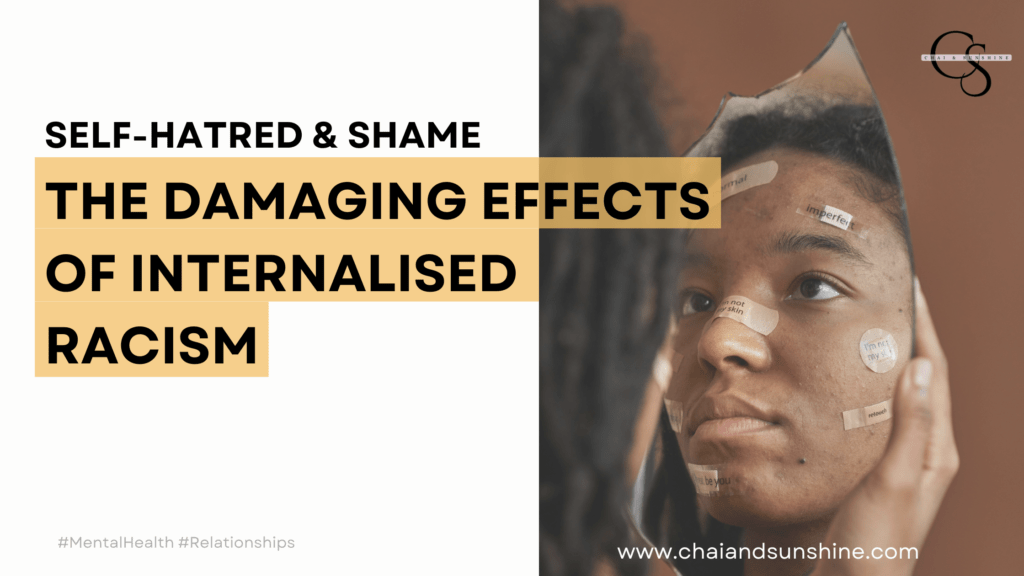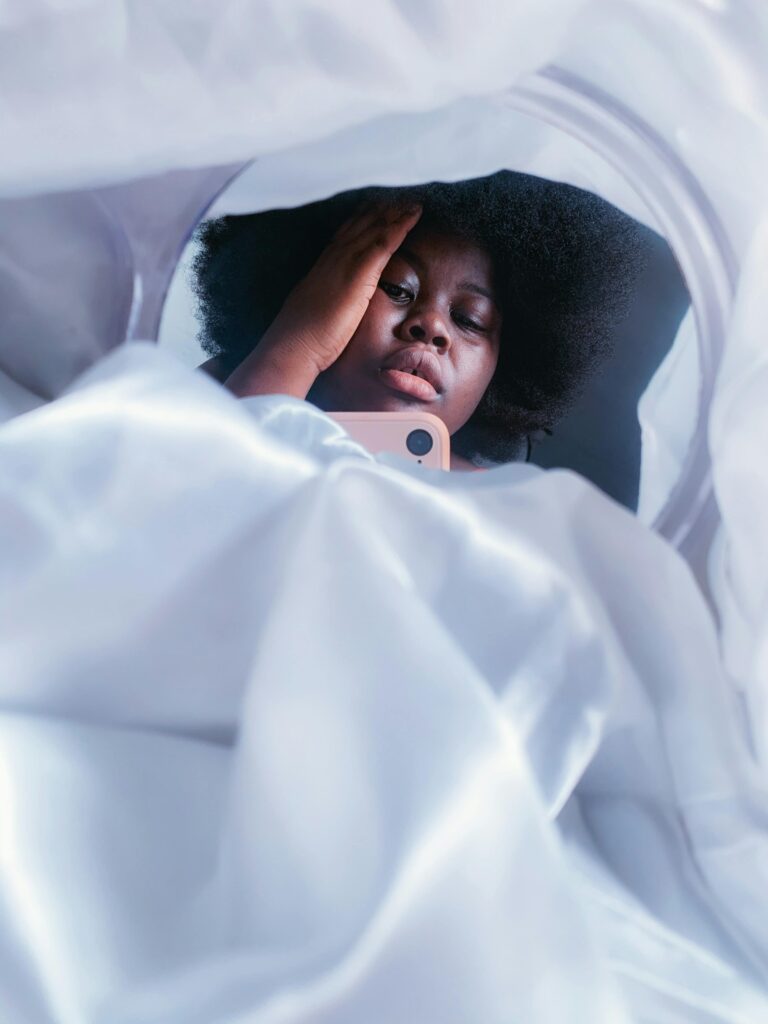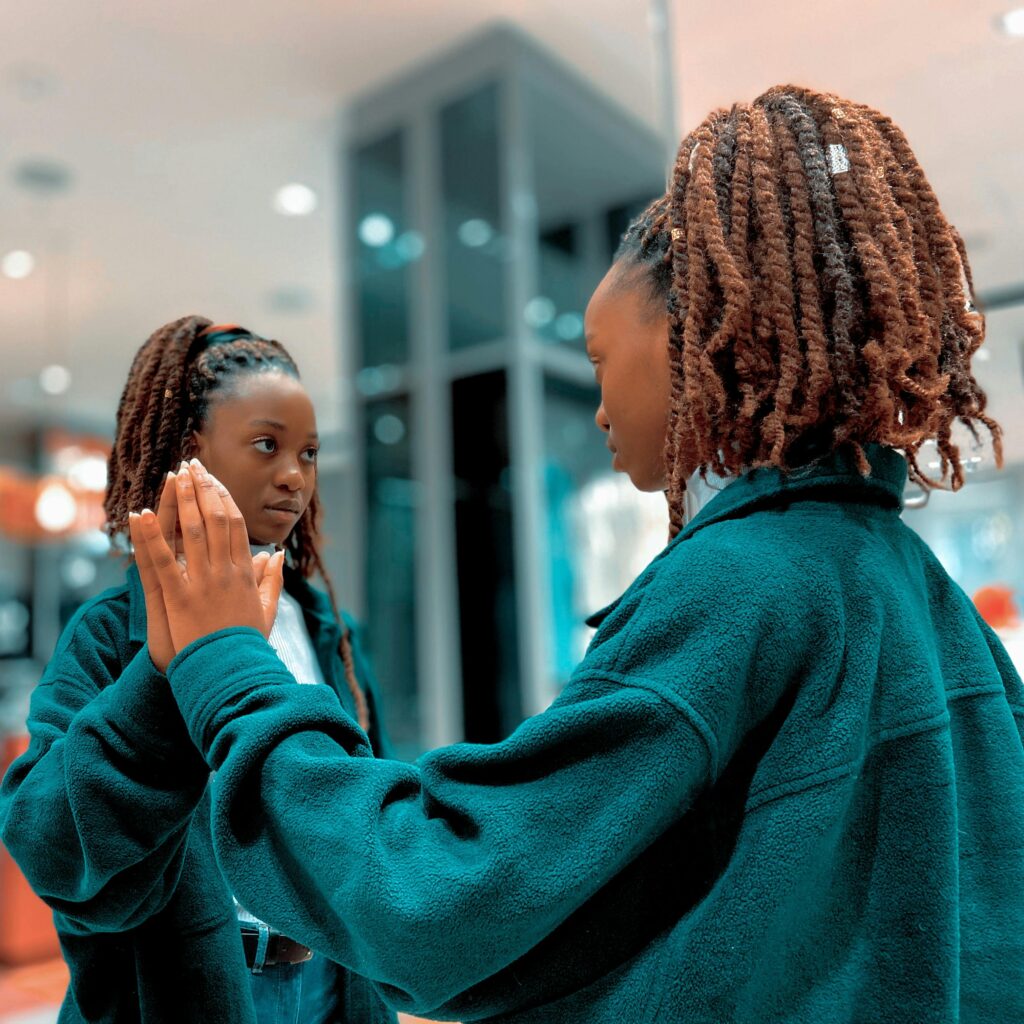
What does it mean to be black in a country birthed from a hateful combination of racial segregation and violence?
How does one reconcile the pride of one’s heritage with the deep-seated wounds inflicted by a society openly built on racial hierarchy?
And what does one do with the mountains of self-hatred and shame in one’s heart, when they are a constant, suffocating presence?
Look away now, if you must.
This post will be deeply personal.
Table of Contents
ToggleUnderstanding Internalised Racism
When discussing racism in nations with a complex history of racial oppression, such as the US, the UK, South Africa, or Australia, the focus tends to be on societal-level issues.
Productive conversations often revolve around policy-based solutions, like, “What policies can address inequality in [specific area]?” or debates on affirmative action.
But, when these discussions become contentious, some of the same questions arise over and over again.
Questions about why individuals cannot simply “move on” from the past.
Internalised Racism: A Definition
Internalised racism is a silent epidemic, a psychological virus that thrives in the shadows of systemic oppression.
As a black person born and raised in post-apartheid South Africa, I have borne witness to its insidious effects not only on myself but on countless others.
But internalised racism just like externalised racism can mean different things to different people.
But broadly speaking, this is what I mean by internalised racism:
- Internalised racism is the unconscious acceptance of negative stereotypes about one’s own racial group.
- It is a form of mental colonisation that can lead to a variety of negative thoughts, feelings, and (self-sabotaging) behaviours.
- When we internalise racism, we begin to believe the negative messages society sends us about our race.
- This can lead to feelings of inferiority, self-hatred, and shame.

How Self-Hatred and Shame Manifests, with Examples
- Low self-esteem: We may constantly compare ourselves to others from different racial backgrounds and feel like we will never measure up.
Examples: Often/ always finding a way to insert your credentials or experiences that make you sound “more white”. This could include education credentials, business success, or travel experiences. Being racist with white people against your own race or other people of colour.
- Self-doubt: We may question our abilities and accomplishments, believing that our success is due to luck rather than our own talent or hard work.
- Difficulty forming healthy relationships: We may struggle to trust others or feel like we don’t deserve love and acceptance.
- Preference for whiteness: We may unconsciously favour white people and white culture over our own. Here’s a test to measure your implicit bias.

"What are you?" - My experience of otherness in South Africa

Growing up the wrong kind of black in post-apartheid South Africa was a complex and often painful experience.
As a foreign African, I felt a profound sense of alienation from both the white and black communities. Often, the latter was worse.
(It’s important to acknowledge that the Black community often carries deep-seated trauma from the era of apartheid, which can manifest as aggression, internalised and outward racism.)
Arriving in South Africa at the age of 3, I was plunged into a world hyper-conscious of race. (For context, Ethiopia, my country of origin, was never colonised. Race was not a big deal there).
When we arrived, my initial experience at a predominantly white kindergarten was so traumatic that my mother considered returning to Ethiopia.
While I eventually found a more inclusive environment, the undercurrent of racism was pervasive throughout my 19 years living there.
A very common question I still face whenever I go is, “What are you?”
This constant categorisation reinforced my sense of otherness.
Within the black community, I encountered another form of discrimination: tribalism.
The emphasis on ethnic affiliation often excluded those, like myself, who didn’t fit neatly into a particular group.
This, coupled with the pervasive colourism (“yellow bones” were the Mercedes Benz’ of the black community) contributed to feelings of inadequacy.
The legacy of apartheid continues to cast a long shadow over South Africa.
As a nation, it struggles to reconcile its past with its present. (Understandable, the country was only born in 1994).
Even today, racial tensions remain palpable.
It was only upon leaving the country and finding refuge in a more racially harmonious society like Portugal that I realised the extent to which I had been impacted by South Africa’s racialised environment.
Breaking free: How to heal the self-hatred and shame from internalised racism
Overcoming internalized racism is a complex and ongoing journey. I’m still navigating this path myself, and I understand the challenges firsthand.
But the first step is always the most important: acknowledging its presence within oneself.
This recognition can be deeply dysregulating, but it’s essential for progress.
And if that’s too hard, you can also try recognising the signs of internalised racism, self-hatred and shame in others, whether it’s in politicians, celebrities, or in everyday interactions. (You don’t necessarily have to confront anyone with your theories, but building that radar can help your case).
By questioning the behaviours and attitudes of others, we can begin to question our own.

Other strategies for healing
- Building a Supportive Community: Surround yourself with people who uplift and validate your experiences. Connecting with others who share similar backgrounds can provide a sense of belonging and shared understanding. You’d be surprised how many of us suffer with this in silence.
- Engaging in Self-Care: Prioritize activities that promote well-being, such as mindfulness, meditation, or physical exercise. These practices can help manage the stress that comes with the constant racism (both out in the world and in your head).
- Exploring Your Identity: Delve into your cultural heritage and history. Discovering your roots can strengthen your sense of self and challenge negative stereotypes. This is especially useful for black people that aren’t from their genetic country of origin.
- Advocacy: Use your voice to challenge racism and promote equality. Engaging in activism can be empowering and contribute to creating a more just society. Of course, be safe while doing so.
- Seeking Professional Help: I’m a huge advocate of therapy or counselling (a big change for a former cynic). A mental health professional can provide guidance and support.
Remember, healing is a personal journey. There is no one-size-fits-all approach. Be patient with yourself, celebrate small victories, and prioritise self-compassion throughout the process.
Final Thoughts
Growing up, I always knew I’d one day leave South Africa. It’s a beautiful country with resilient people.
But, subconsciously, I believe I knew I needed to escape the racism-polarised glasses that one is forced to wear while there.
Yet, even thousands of miles away, the echoes of that pain persists in my thoughts.
Internalised racism is a heavy cross to carry in this life.
And at times, the anger and sadness can be overwhelming.
However, in sharing my story, I hope to contribute to a broader conversation about the self-hatred and shame that accompanies internalised racism.
Because the best, most healing conversations to have, are sometimes the most personal.
By acknowledging our collective wounds, we can begin to heal and build a future where everyone feels seen, valued, and respected.
It’s a daunting task, but it’s one that I believe is essential for our shared humanity.

[…] as I work through my own unlearning – including internalised racism and misogyny – I realise that what I want to talk about and create is not just another […]
[…] As Black women, we need to lean into the discomfort we might feel on “bad hair days” and question whether the shame we experience stems from deeply internalised racism. […]
[…] As Black women, we need to lean into the discomfort we might feel on “bad hair days” and question whether the shame we experience stems from deeply internalised racism. […]